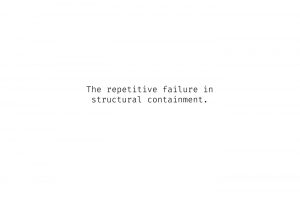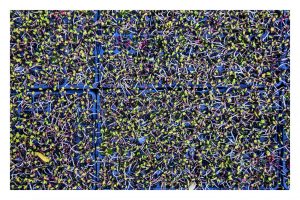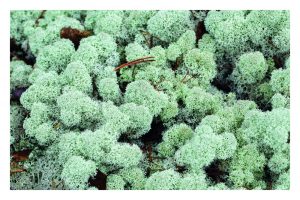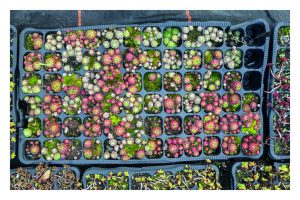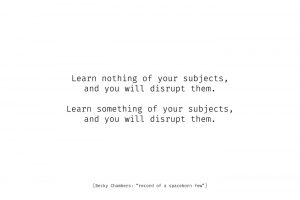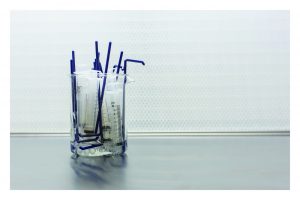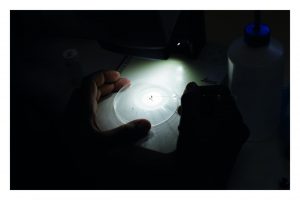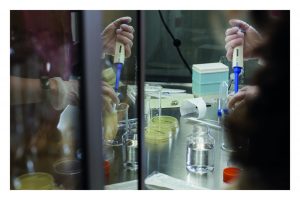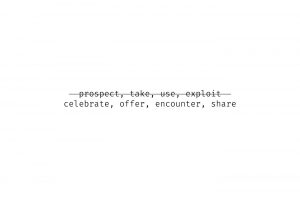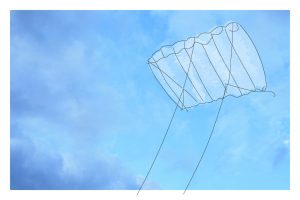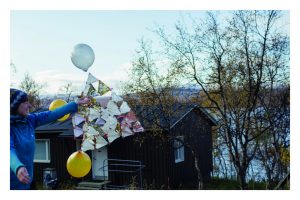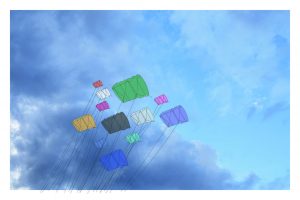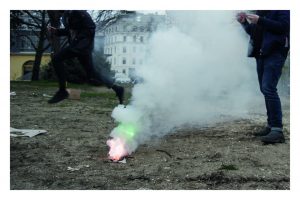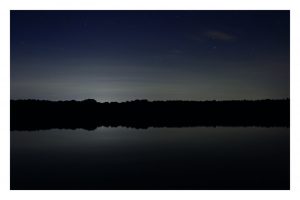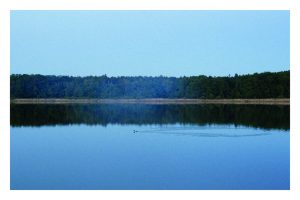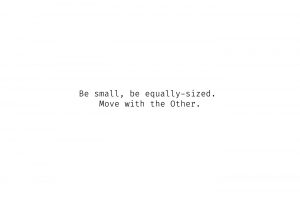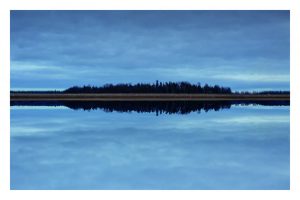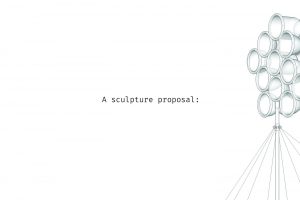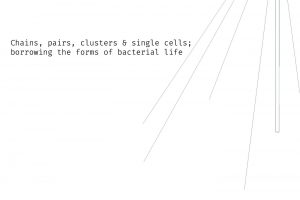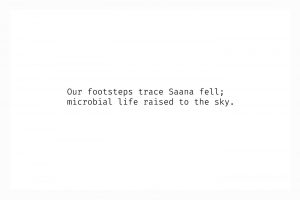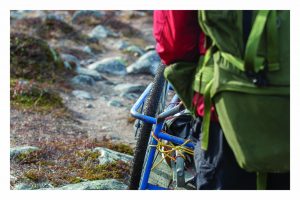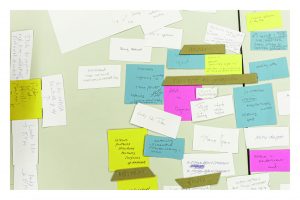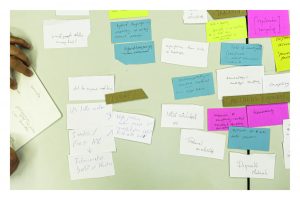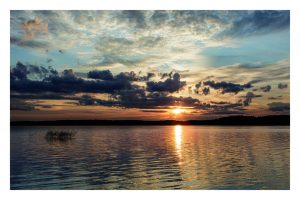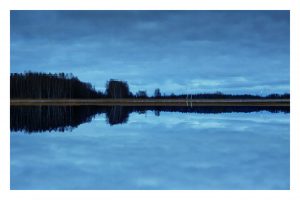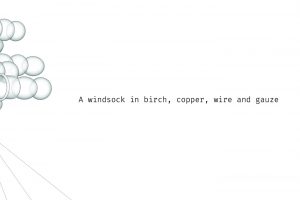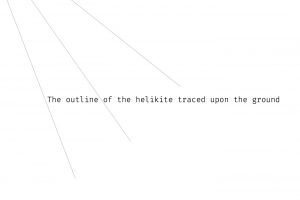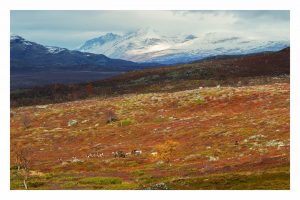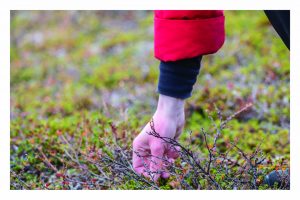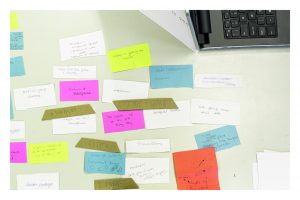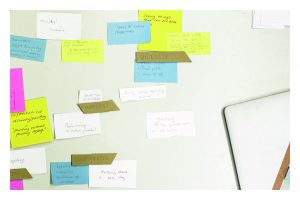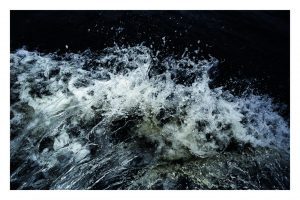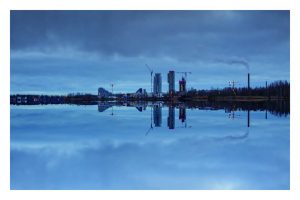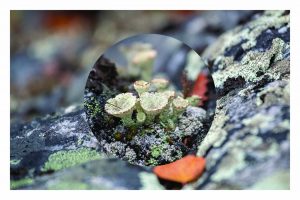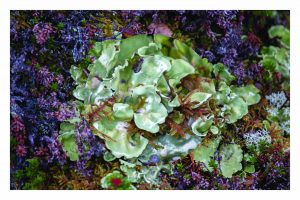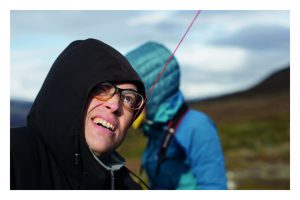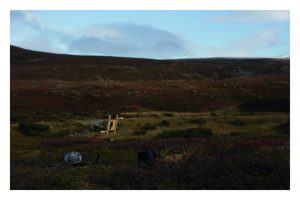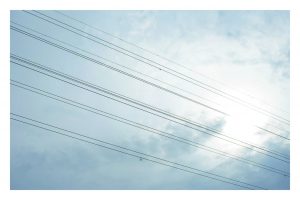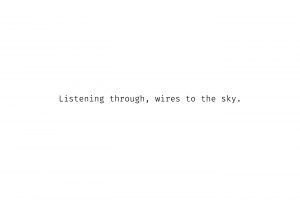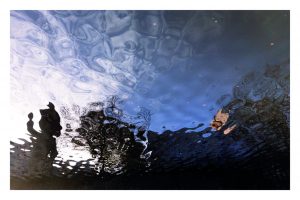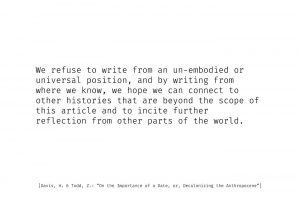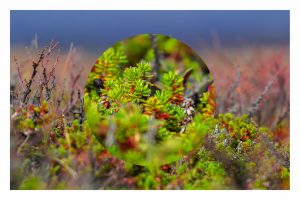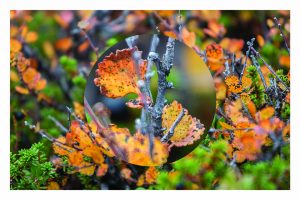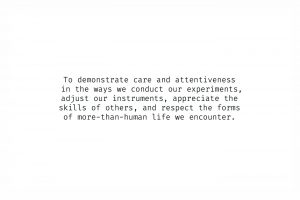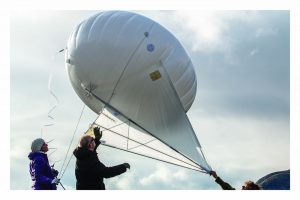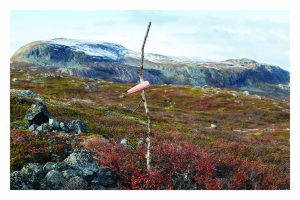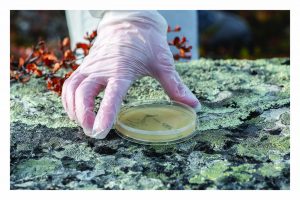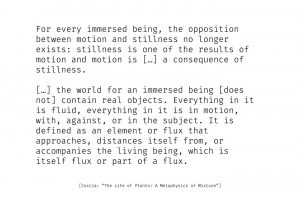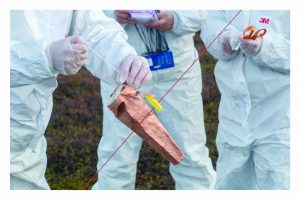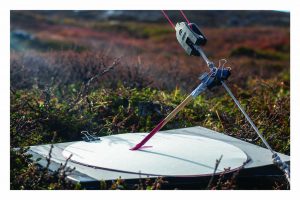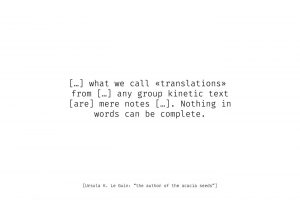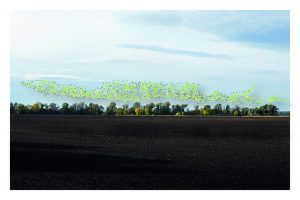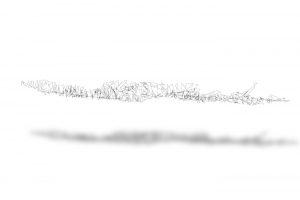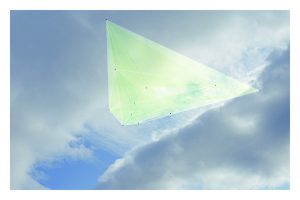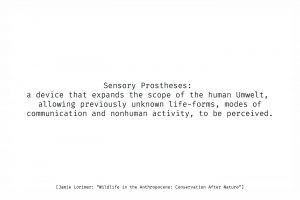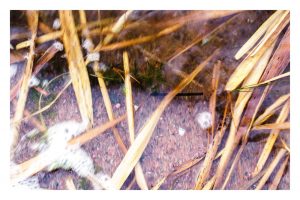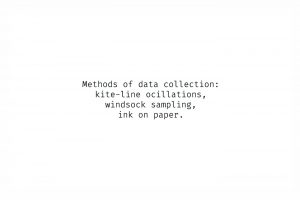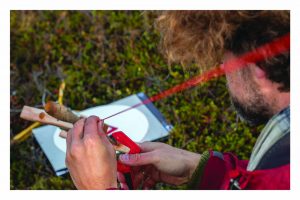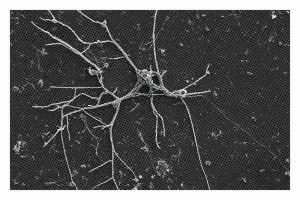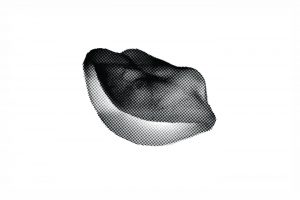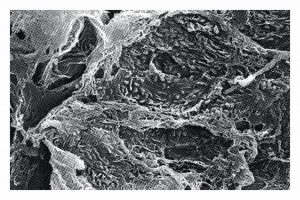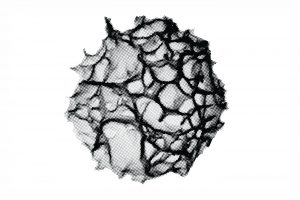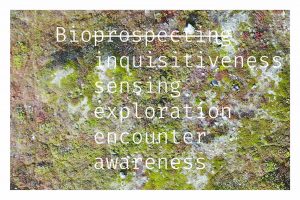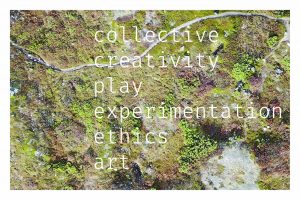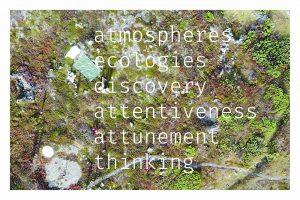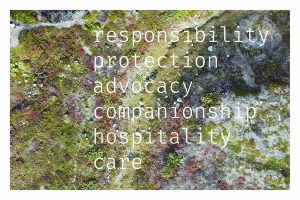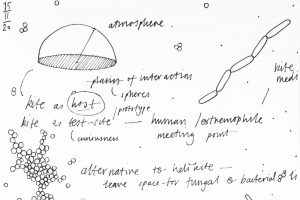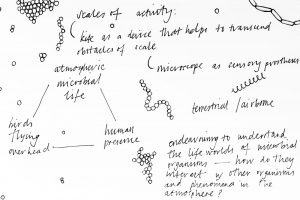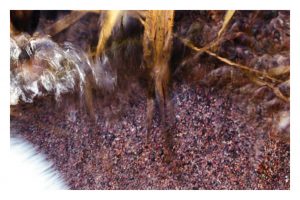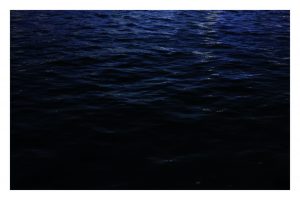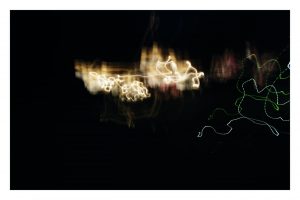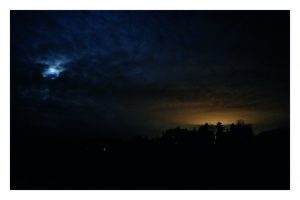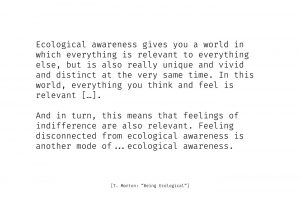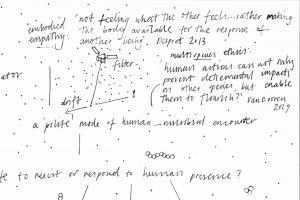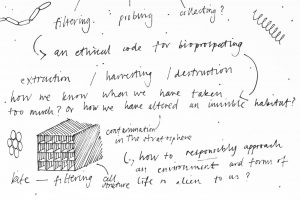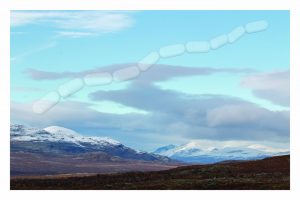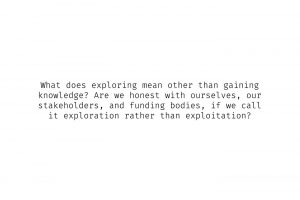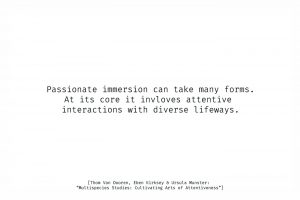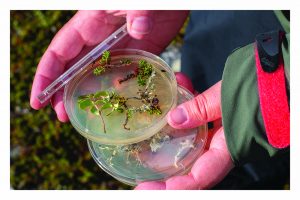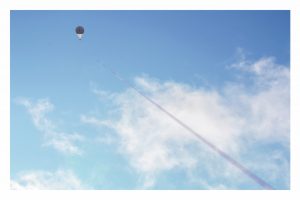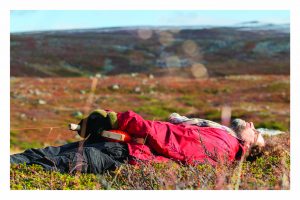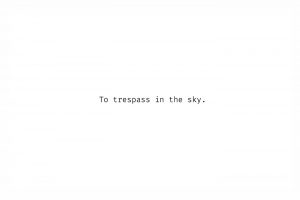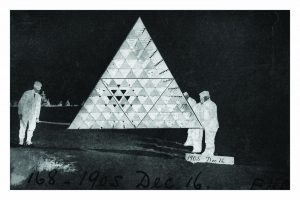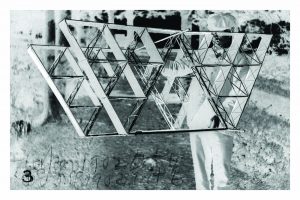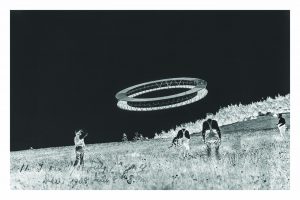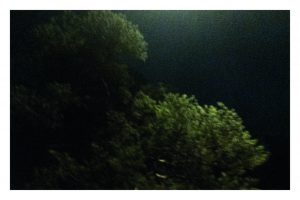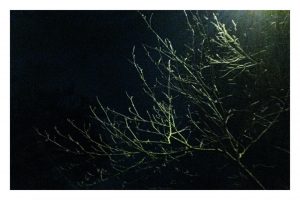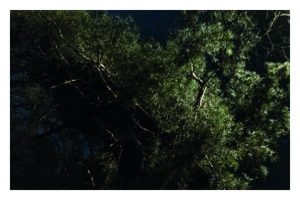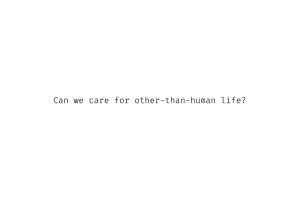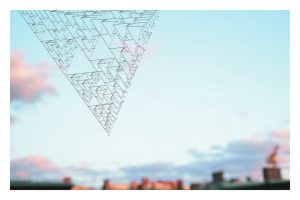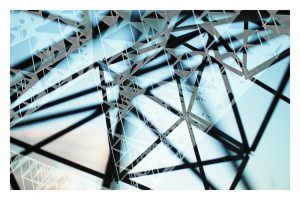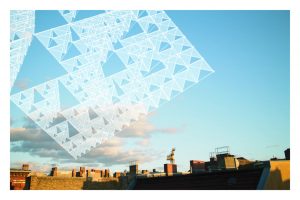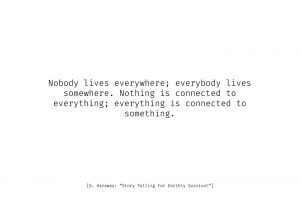A conversation between Hannah Imlach and Till Bovermann around the motivation and realisation of their piece flock, commissioned for the Atmospheric Encounters exhibition at BOM (Birmingham, 19th May – 28th August 2021) and BioArt Society, tbd.).
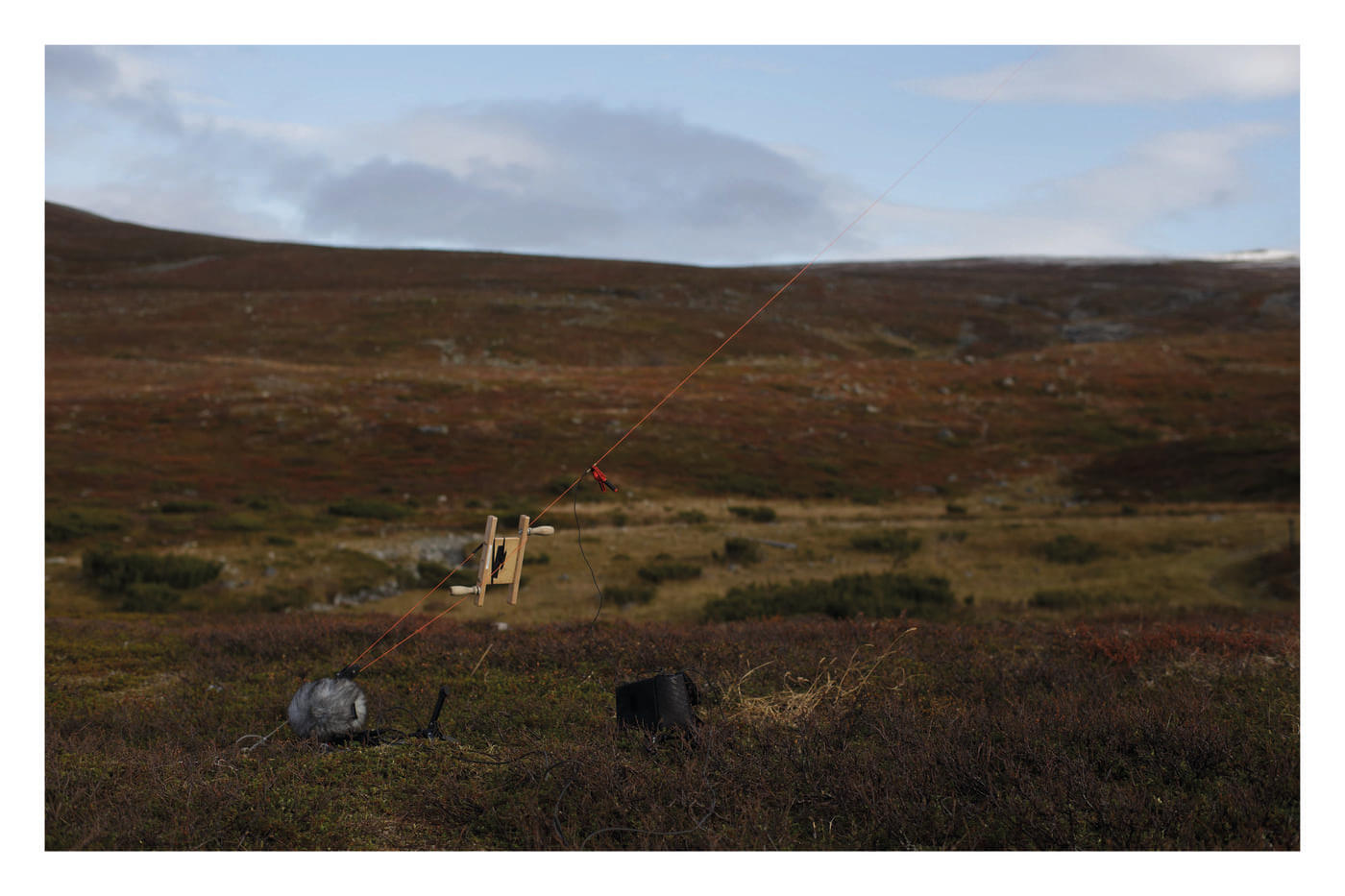
Hannah: I am aware that the Field_notes: the heavens residency was not your first time working at the Kilpisjärvi Field Station. Can you describe what motivated you to return multiple times to conduct creative inquiries in the sub-arctic, and what new perspective you gained from working as part of the H.A.B. — High Altitude Bioprospecting group?
Till: Yes, I have been in Kilpisjärvi several times before. What brought me back was a growing fascination with the place. It appeared kind of unimpressive at first, even empty, but the longer I looked into it, the more it revealed its wicked interdependencies and complex interrelations between “nature”, “farming,” “nation”, and “culture”. Each claiming its own version of the place, each subdivided yet deeply connected to everything else.
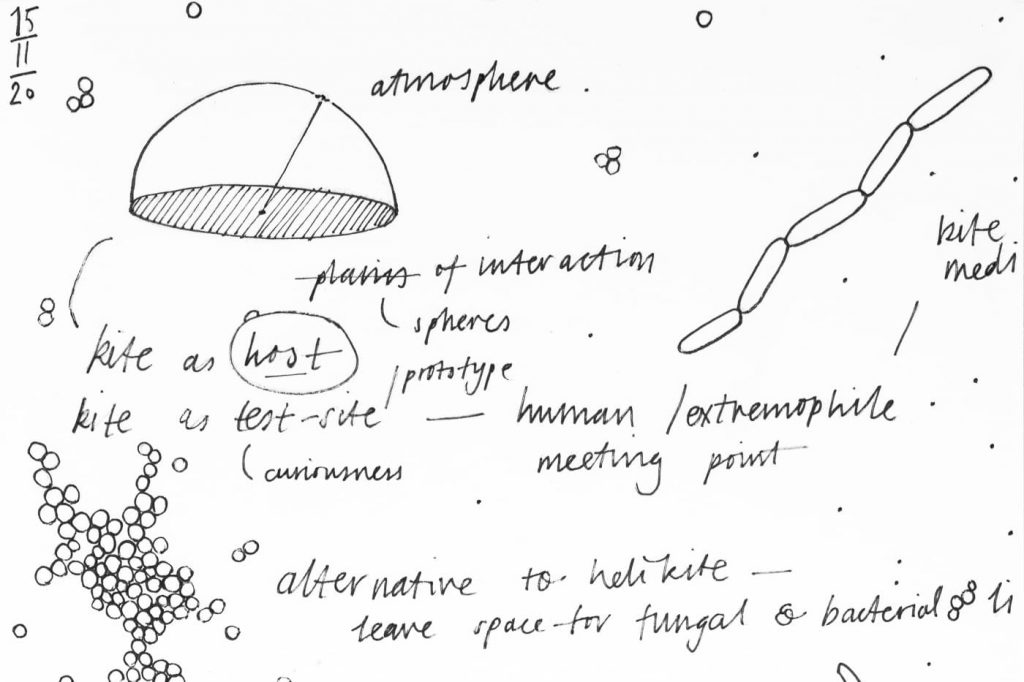
Hannah: Maybe Kilpisjärvi is a space where the conflicting interests of these entities are closer to the surface, or feel more visible?
Till: Yes, I think so. Maybe it is the scarceness of the environment, its brittleness. Changes feel confronting, one notices them immediately. The arctic climate causes processes of decay and adaptation to be slowed; they play out for all to see. This clarity has helped me, and possibly others, to recognise and reflect on the interrelations and consequences of our past and current actions.
Hannah: What kind of works have you made in Kilpisjärvi? How was your experience this time different?
Till: The majority of times, I was part of a group of between 5 and 35 people. We attended workshops or mini-residencies, discussing various themes related to the Kilpisjärivi region. So, in many ways, similar to the Field_Notes residency. One time, however, I spent two weeks by myself, which turned out very differently. It felt like a conversation between me and the environment. I had more freedom to extensively listen and take it in.
What was your impression of Kilpisjärvi, being there for the first time as part of the H.A.B.-group?
Hannah: It is an amazing and memorable place. And interestingly, I experienced it in a very different way to how I may have, if I had been there independently. My experiences were shaped through the intensive work we undertook as the H.A.B. group. The practice of flying the helikite every day involved transporting heavy equipment up the Saana fjell; adjustments of equipment, tuning instruments, working together to launch the kite, and conducting experiments in very cold conditions. This frenetic activity saw us return to the same launch site day-on-day, so although we didn’t explore widely, we became quite intimately acquainted with that site; the flora underfoot, the passing skeins of migratory birds, the mountain vista, passing reindeer.
The group’s initial activities were pre-determined by the founding members of the H.A.B group and their infectious inquisitiveness. However, during the week, as we spent more time in the field and working together, each member of the group began to add their own experiments into the mix, creating adaptations and hybrids. What we achieved by the end was a collectively-produced set of both scientific and artistic methods for exploring the atmosphere, using the helikite as a research tool. Applying these methods, we produced a huge amount of material, or ‘data’, that the group members have digested, and used to inform their artworks.
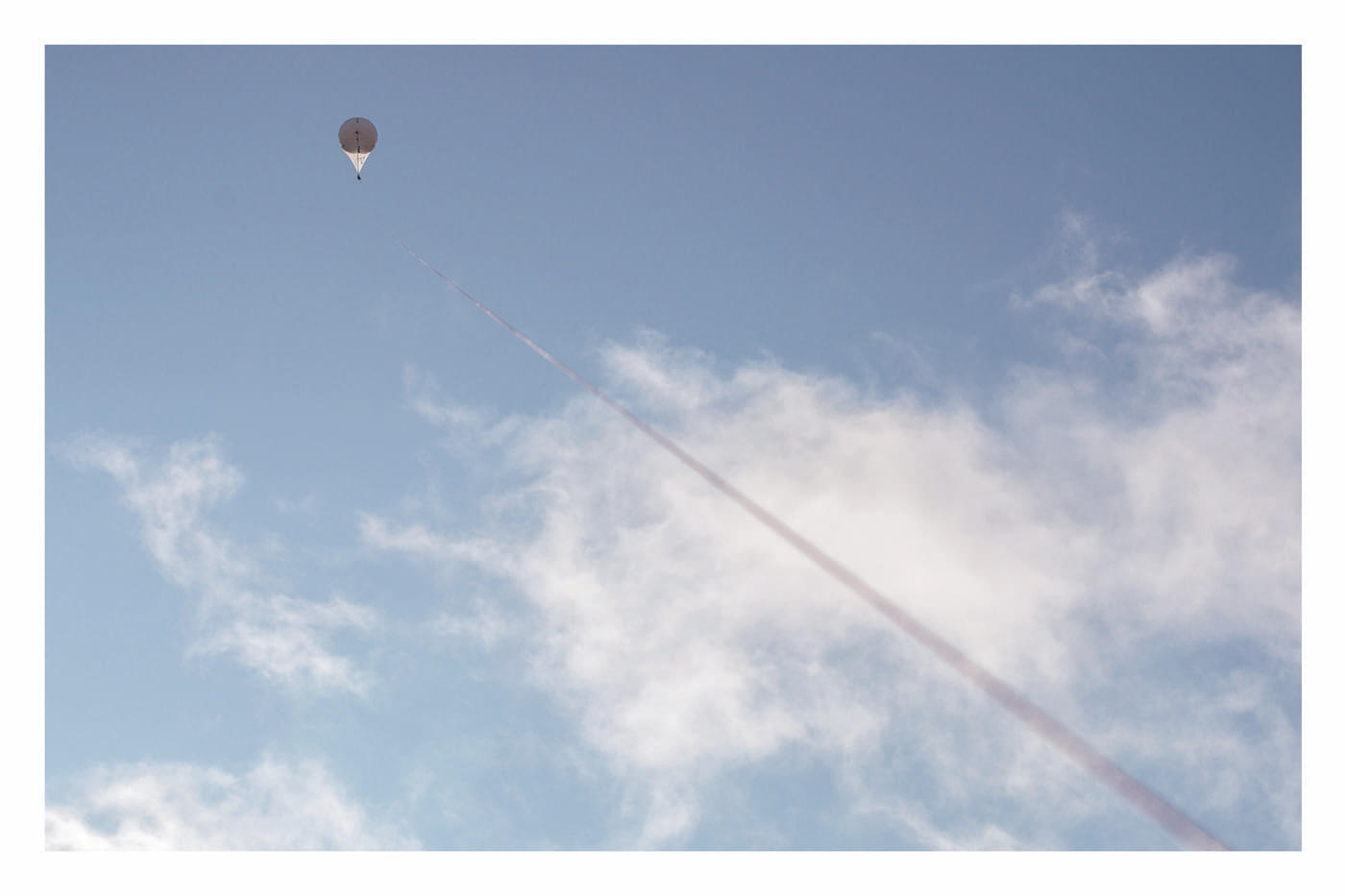
During the residency, we started this discussion – the one that initiated our collaborative project – while tying together components of a tetrahedral kite. Can you describe what you found generative about the process of talking and kite-making, and how this relates to some of the wider theoretical questions we have been asking? Perhaps you could begin by explaining how the kite came about?
Till: We hosted a workshop where the 35 Field_Notes participants were invited to collectively build a tetrahedral kite (after Alexander Graham Bell). It was a good decision since during the building process, some great discussions arose between the kite makers. By the end we were left with approximately 40 small tetrahedrons to be assembled into the larger kite structure.
Some evenings later the two of us began to assemble the kite. We worked studiously, although we were not hopeful that the resulting object would be a fully functional kite. Instead, we undertook this process of doing, working with our hands, to reflect in action and discussion on the intensive days up Saana fjell, flying the helikite. To ask why we were doing what we were doing.
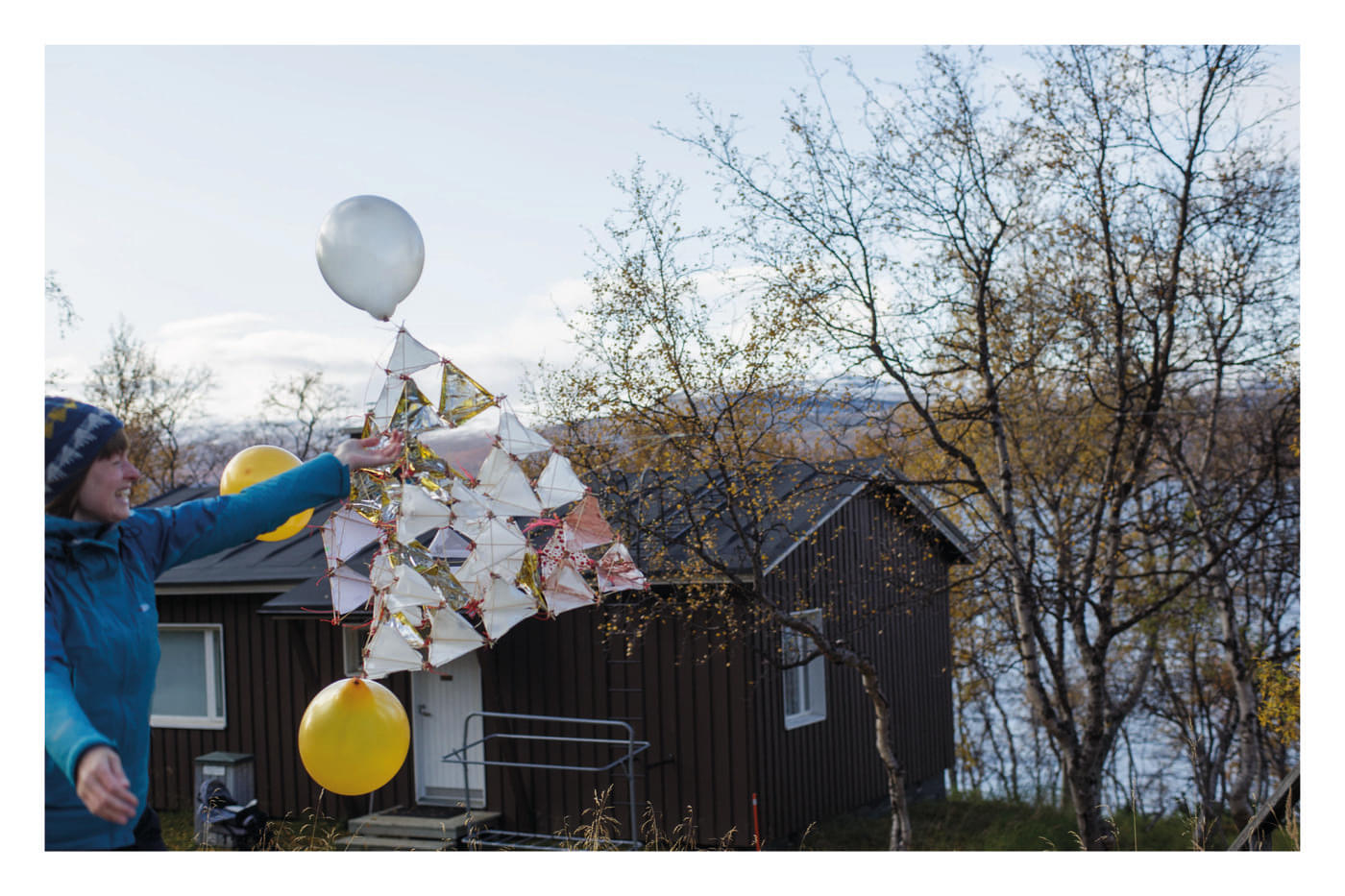
In this informal setting, we reflected on how vocabulary influences our activities; how the title “high altitude bioprospecting” shaped the context of our endeavour. We also discussed whether there needed to be an “outcome,” a “result” of our shared labour during the residency. What emerged on that evening was a need to justify our approach, especially in relation to working in, travelling to, such a remote place. It is, after all, quite a lot of effort to travel to Kilpisjärvi and it is a rather fragile environment. Did we need a more concrete idea or justification? In my view, this challenge of justification is only now part-resolved with the exhibition at BOM, in which we have a chance to contextuale and convey our activities and impressions to others.
So, this night assembling the kite was a defining moment for me. What, from your perspective, led us to this collaboration?
Hannah: For me, one of the most interesting aspects of the residency was that it opened a lot of new questions rather than providing ‘neat’ answers. Through our investigations of atmospheric life, we were struck by ethical questions, particularly concerning the intentions of ‘bioprospecting’. So, when we were asked to create an artwork in response to the residency, it seemed like a good opportunity to return to and explore some of these interesting, unresolved questions. The postcards series became a way of sharing our thinking and opening our conversation. It was also a way of exchanging ideas and material across distance as we worked through the coronavirus lockdowns. The postcard idea allowed us to work flexibly, to explore multiple ideas, and work with a light, playful touch. It was liberating to work on small-scale work in this agile way.
Till: Another aspect of postcard-making that I find intriguing is that it requires meticulous work, similar to our kite-making in Kilpisjärvi.
Hannah: Yes, the postcards allowed us time and space, a slow way of working and thinking together. They were also very different from the other work I was doing at the time, which was freeing.
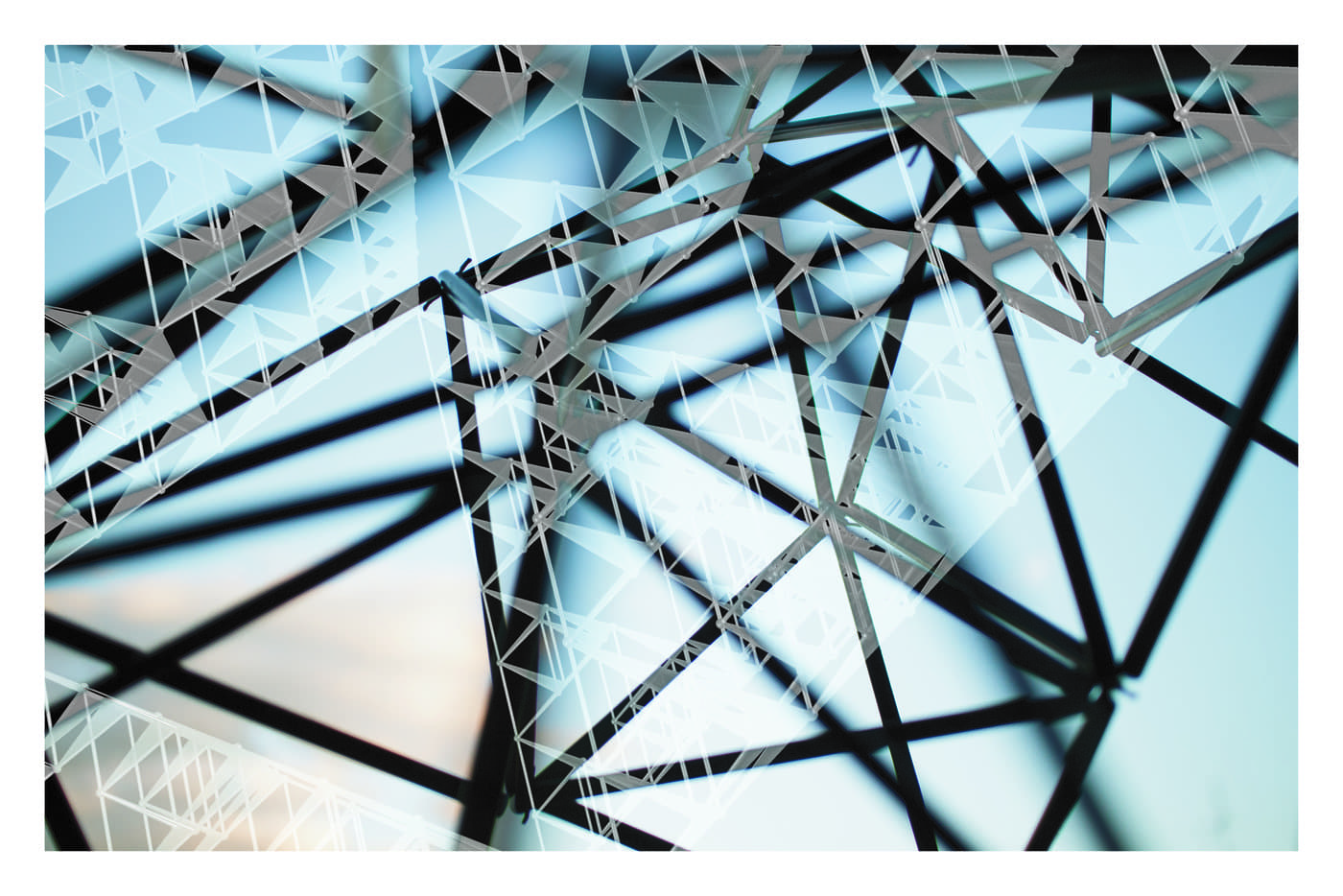
So, I want to speak to you about our shared discomfort with the language of bioprospecting. A term that seems to sit at odds with post- and more-than-human scholarship that we are both engaged with. Can you say something about our discussions on the ethical dimensions of exploring microbial life and what questions you think we should be asking?
Till: The way you asked that question is nice because you were not asking about the problems or challenges, but rather inviting us to invent and define an alternative approach to what I would term “exploring”.
I see the notion of “exploration” with its complex legacies of exploitation and extraction as being both defining, as well as challenging for us as Western European people, possibly even for us as humans. The danger is that we may fall back into, or worse continue, habits of colonialism, that we talk about “wilderness” or “untouched land” and assume that it needs to be “discovered”.
Instead, we need to learn from countless small and not-so-small historic disasters that everything we consider to be “untouched”, “wild”, “barren”, or “new” is already inhabited. Places are not waiting to “be discovered”, they do not depend on us to be understood. Their inhabitants are not relying on us to be granted a “right to be”. Instead, we are always intruders, everything we gather is taken away from those that inhabited, or still inhabit, that place before we entered it.
This fact became very evident to me when we discussed our thoughts on high altitude microbial life. Possibly because it has an almost mythical quality to it, it is difficult to reach and, although we can look at it, there seems not much of anything to see. Hence, there is less concern of causing damage as the sky appears empty. It turns out later, often in the aftermath of destruction, that it actually was inhabited by someone. By claiming, as a species, to be able to anticipate results of our actions, we have the obligation to take these Others and their rights into account when considering how to explore and conduct research, be it scientific or artistic. We need to tread as lightly as possible. We need to be conscious about our reasons for action, and we need to question the sustainability of our approach.
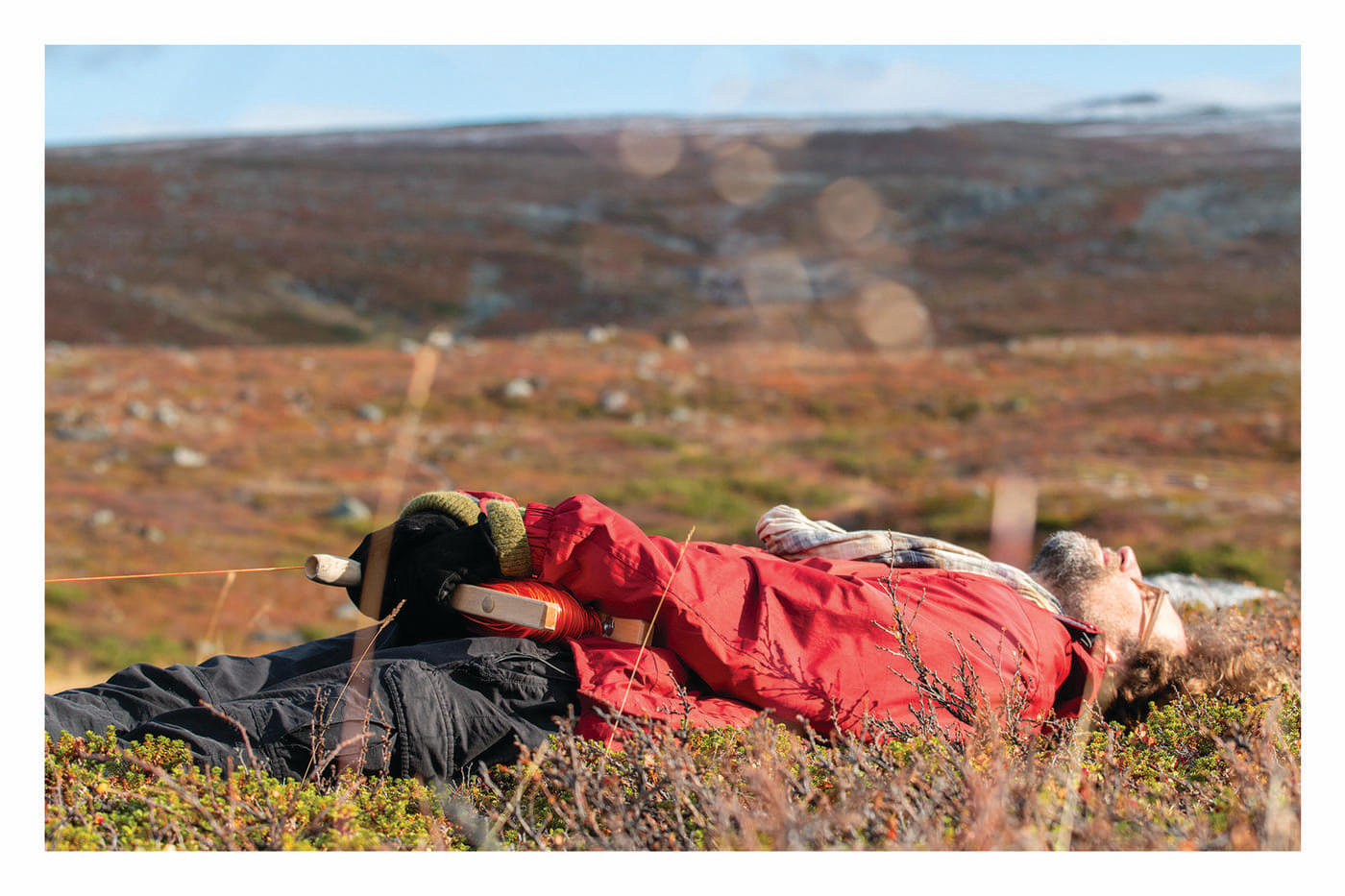
Coming back to our postcards, can you describe your approach in translating some of these ideas into the form of our work?
Hannah: As I mentioned before, the postcards offered me an opportunity to return to and process the material I gathered in Kilpisjärvi, enlivened by our conversations. The Sensory Prosthesis set of four postcards for example, explores how a device, such as the helikite, extends the scope of human exploration. I borrow the concept of a ‘sensory prostheses’ from geographer Jamie Lorimer who uses it to describe how the tools of scientific research and conservation extend the sensing capacities of the human body, allowing practitioners to tune-in to the lifeworlds of other organisms. These devices, such as spotting scopes, microscopes, bat detectors and infrared goggles, allow us to access environs and forms of behaviour usually inaccessible to humans. I came to define the helikite as a sensory prosthesis, an object which brought us into contact with airborne communities that we would not otherwise encounter. In the postcard series, I worked with the microscopy imagery that resulted from our experiments, processed by Mel. I began to build 3D models inspired by their base-unit forms, chains, spheres and lozenge shapes, which I collaged back onto landscape images taken on Saana.
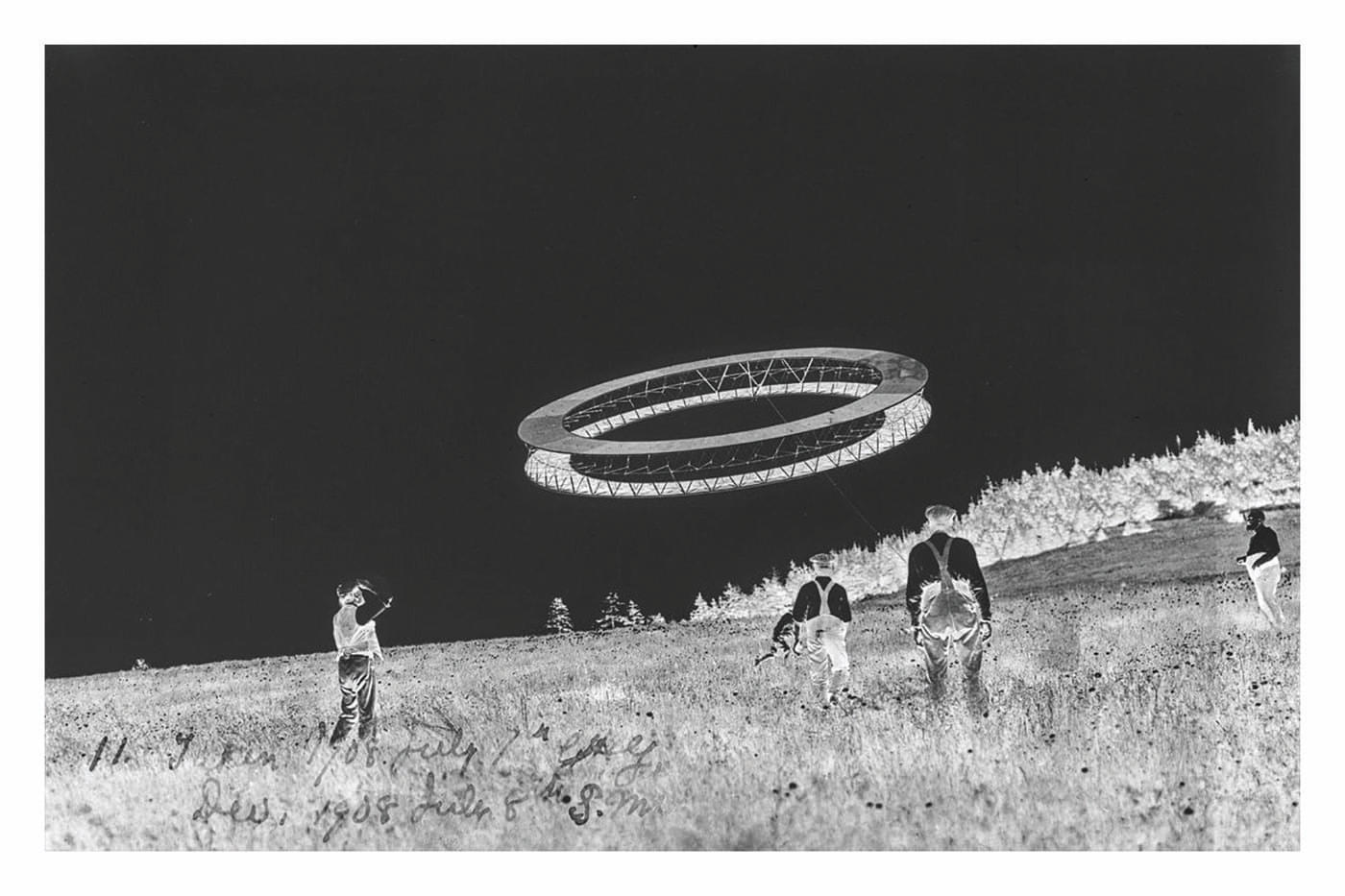
In another postcard set, titled Trespassing, I wanted to reference the history of human desire to occupy the skies by exploring archival images of kite building and flying. I am fascinated by experimental gliders and kites, pre-aircraft, objects designed to catch wind currents and even lift a human into the air. I wanted to investigate what motivated this labour intensive and quite outlandish endeavour, that I saw mirrored in our helikite experiments.
Till: I particularly like that set because you put historical photos into a new context. Those original photos capture so much eagerness to build something that would fly. Your contextualisation, however, adds an important layer, the notion of invading, humans moving into a new “territory”. One can see that there is always a consequence to our actions, especially by being a pioneer, an explorer; someone making possible what was not thought of before.
I think it is important to reflect on the process of an exploration, what implications does it have for the “conquered” environment…
Hannah: Yes, you used a great quote by Becky Chambers (Record of a Spaceborn Few) in one of your postcards: “Learn nothing of your subjects, and you will disrupt them. Learn something of your subjects, and you will disrupt them”. We should always be attentive to that potential loss, it should always be present in our thinking.
I’m conscious that while I principally recorded my experiences in Kilpisjärvi through photography, you were also paying close attention to the sonic, and created an amazing series of field recordings which you used to create the immersive soundscape in the exhibition. Can you say something about the process of making it?
Till: I like to listen. So it is kind of natural for me to collect sounds. My motivation to do so during the Field_Notes residency was mainly to document the process we were going through as a group.
When we were commissioned, I found it necessary to add a soundscape to complement the visuality of our piece, possibly as an environment for reflection. Since I often use unusual audio components next to more common equipment, I collected a lot of material that could be interpreted as listening from an unusual perspective: contact microphones for example make it possible to listen through an object, in this case through the wire of the flying helikite.
The actual composition process (as well as the selection and production of the cards) was intuitive. I think I have a less structured way of creating the content than you do; for me a lot is in the process of production itself, which forces me to spend time thinking about the content. There are hours of material that need to be carefully listened to, selected and processed. I think through this process.
Hannah: Yet another meticulous process.
Till: Yes, that is true. It is also similar to flying a kite, actually, or making one. There is a certain mechanical process that keeps me occupied, and at the same time it is possible to keep my thoughts drifting around the material, and this implicitly shapes the outcome. I started to realise that what I was creating was the sonic perspective of the high-altitude microbial life forms. What they could hear of our activity on the ground from the altitude of the helikite.
Hannah: I love that. You have imagined what the microbes above us might hear, if they had the capacity to do so. I think that is at the center of our project, trying to imagine the lifeways of organisms that are so very other-than-human. It is not possible to see through the eyes of another creature, to experience life as a fish or a deer or even a microbe, but it doesn’t mean that the endeavor of trying is not productive or useful.
Till: The funny thing is that there are lots of these contradictions in our work: microbial life does not hear and also, the helikite we used flies only 200 meters high. The “high altitude” biosphere is at much greater altitudes. This felt more like a testing ground, to broaden our perspective and imagine how it may feel to visit the high altitudes “for real”.
Such an endeavor I see on another of your card sets, which references your desire to return to Kilpisjärvi?
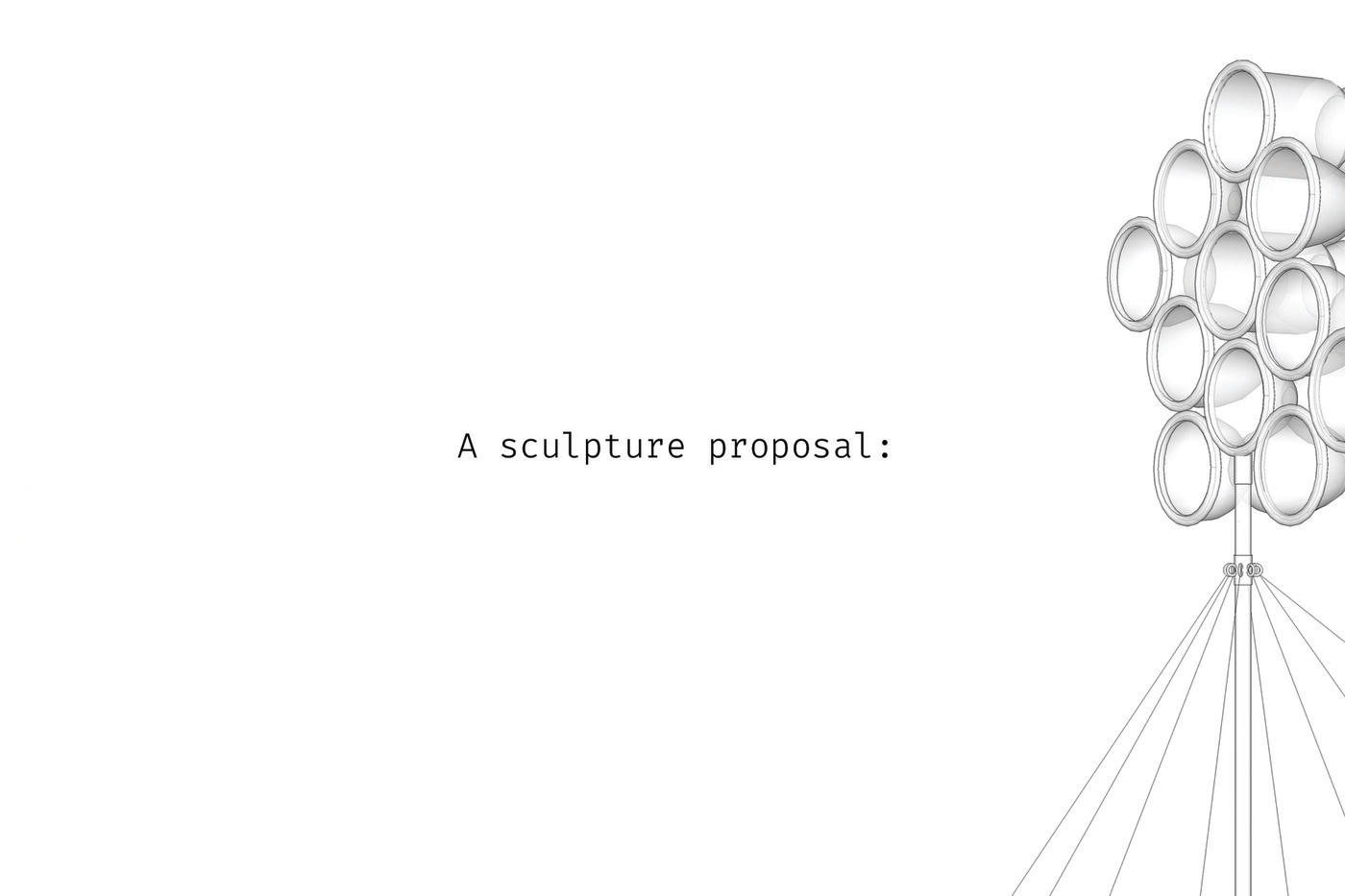
Hannah: Yes, I have an idea for an artwork. An inflatable wind-activated sculpture inspired by the windsocks we used to capture microbial life. The sculpture would synthesise both the amazing intricate forms of microbial life that we discovered in the arctic atmosphere, and the apparatus that we worked with: the copper fabric and kite line and ground anchor. This is an idea I will sit with, and perhaps in the future there will be an opportunity to return to the field station and create it.
Thanks Till, I have really enjoyed these conversations and how they have extended my practice. I think particularly of how we pushed each other to continually question our ‘right’ to explore, our discussion on careful practice, and the joy we share in making. There is a lot of learning that has come out of our discourse which I hope can inform future, perhaps in-person, collaboration.
Hannah Imlach is a visual artist-researcher working predominantly in sculpture and photography. Her artworks respond to particular ecologies, often exploring sites of environmental conservation and renewable energy transition. These projects are initiated by opportunities to work within communities of specialist environmental knowledge, including scientific research groups, conservation charities and community organisations. Her sculptures focus on sensory interaction and are often foldable, faceted or kinetic. Hannah is currently completing a collaborative PhD with the RSPB at their Loch Lomond nature reserve.
Till Bovermann is an artist and scientist working with field recordings and interactive sound programming to create sonic experiences and speculative islands of immersion and reflection. He has shown his work and self-made instruments among others at Ars Electonica, ZKM Karlsruhe, Silent Green Berlin, OT301 Amsterdam, or the Queen Mary University, London. Till is part of the artist collective “friendly.organisms”.
Part of flock (2019–2021), an installation by Till Bovermann and Hannah Imlach for H.A.B. (2021). Read about the context in a conversation between Hannah and Till.
